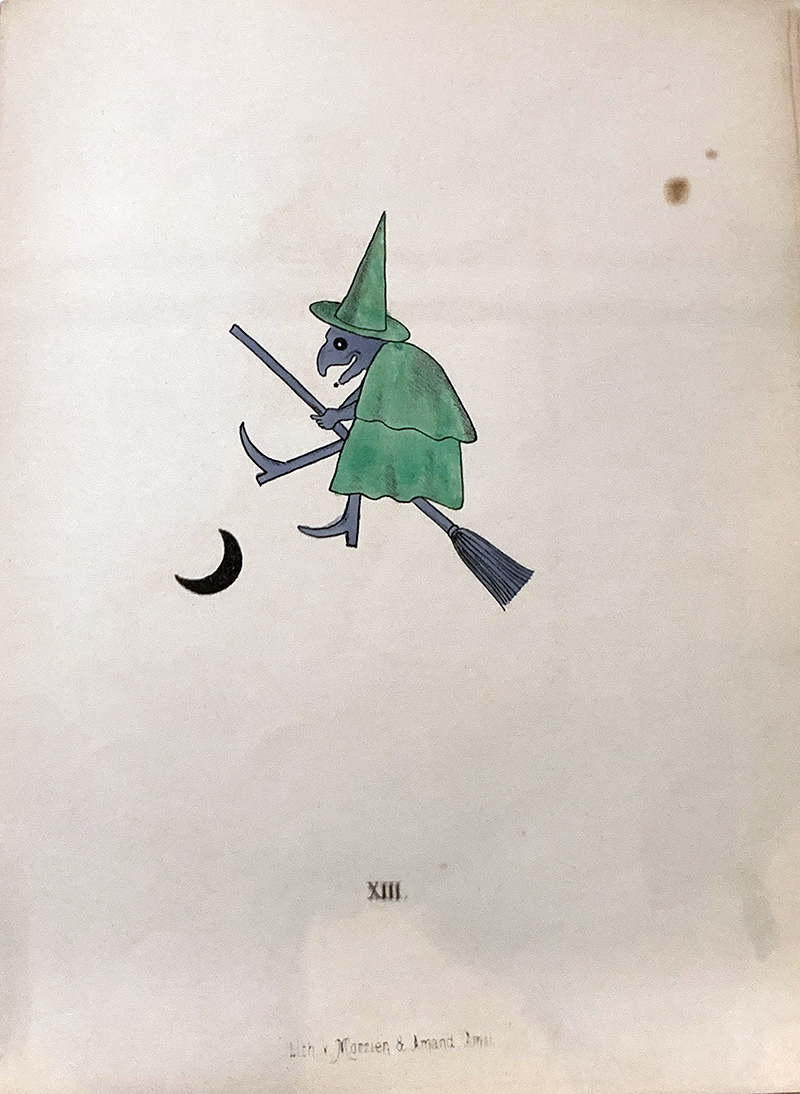Sacred/Supernatural: Religion, Myth, and Magic in European Prints, 1450-1900, which opened at Krannert Art Museum in January, will be closing this weekend. If you haven’t had a chance to see it, I suggest you do so. Here’s why.
This exhibition, curated by Maureen Warren, Curator of European and American Art at Krannert Art Museum, covers significant territory for those interested in the rise of Christianity in Europe, the evolution of printmaking during, and those of us, all of us, living in a world where the construction of images is a means to enforce or proscribe particular behaviors or worldviews. In short, Sacred/Supernatural explores mark making as a vehicle for mythological and religious meaning making.
Any exploration of sacred and supernatural imagery first begs the question of how does an artist illustrate the unseen? And, following that, what qualities of line work signify “sacred” vs. “supernatural”? Sacred/Supernatural includes a wide variety of prints and manuscripts, many on loan from the Rare Book and Manuscript Library, in its investigation of these critical questions.

Photo by Debra Domal.
The exhibition’s signature image, Claude Mellan’s Veronica’s Veil, 1649, is perhaps the most revealing example of how artistic innovation serves to strengthen Christianity’s messages. This digitally rendered close up highlights Mellan’s line work choices.
As the curator notes:
“The Veil of Veronica is said to have been created when Jesus wiped his face on a piece of cloth as he carried his cross to his place of his crucifiction.
Mellan made this image with a single spiraling line, varying the thickness of the line and the width between them to achieve form and shading. The text at the bottom translates as “the unique one made only by one, like no other.” This refers to three unique things. First, Jesus is a divine being. Second, the miraculous transfer of Jesus’ face to the veil. And third, Mellan’s ingenious image.”
But as the slash in the title reminds us, there is no “either” without an “or”. There is no sacred without the sacrilegious. As Maureen Warren reminds us in her introductory statement:
“While the themes may be otherworldly, these prints had a real-world impact. Many are devotional, helping the faithful strengthen their piety. Others guided the viewer toward a good life through example or counterexample, showing moral exemplars or the consequences of bad behavior. “
Making my way through the exhibit, I found myself thinking back to my conversation about historic witchcraft texts with two of the Rare Book and Manuscript librarians. As someone long fascinated by representations of the supernatural in art and literature, I got goosebumps standing before a book from Francesco Maria Guazzo’s Compendium Maleficarum. This weighty three book series, published in 1608, cemented the threat of the “supernatural” in the minds of Christians. Part field guide for witchhunters, part rap sheet, it literally draws a stark contrast to the images of saints, many of which are contained within this exhibition.

Photo by Debra Domal.
At the entry to the gallery, Warren reminds viewers that “even if some works had a devotional or didactic purpose, they were nonetheless intended to entertain and delight.” Two of my most delightful moments were encountering the manuscript of William Blake’s The Fall, and, stumbling upon this little green witch, created by an anonymous artist, for J.H. Brown’s 1866 publication, Spectropia, or, Surprising spectral illlusions.

Photo by Debra Domal.

Photo by Debra Domal.
While this small illustration may seem harmless or even insignificant, its true power is in its technology. As curatorial intern Emma Wise explains, “the illustrations in this book were used to create optical illusions called “afterimages.” After staring at an image for at least fifteen seconds, without blinking, you can look at a blank wall and the image will reappear. This illustration includes some of the most icon iconography associated with witches, such as a pointed hat and broom stick.” While this haunting effect may have been designed to incite fear in its readers, the science and technology behind it were truly magical to behold.
And while it may be dangerous to draw parallels between the visual delights and religious didactics of this era with contemporary pop culture’s complex fascination with the supernatural, there are two points worth considering. Whether delightful, daunting, or disturbing, images of the sacred and supernatural are constructed for a purpose. And the very desire for such construction, no matter how problematic, can be the catalyst for significant artistic innovation.
Krannert Art Museum is open till 8 p.m. on Thursdays. Take some time to explore this compelling collection before it closes. And if you can, bring a friend. I can guarantee you’ll find much to discuss afterwards.
Sacred/Supernatural: Religion, Myth, and Magic in European Prints, 1450-1900
Through May 15th
Krannert Art Museum
500 E Peabody
Champaign
Plan your visit here.








